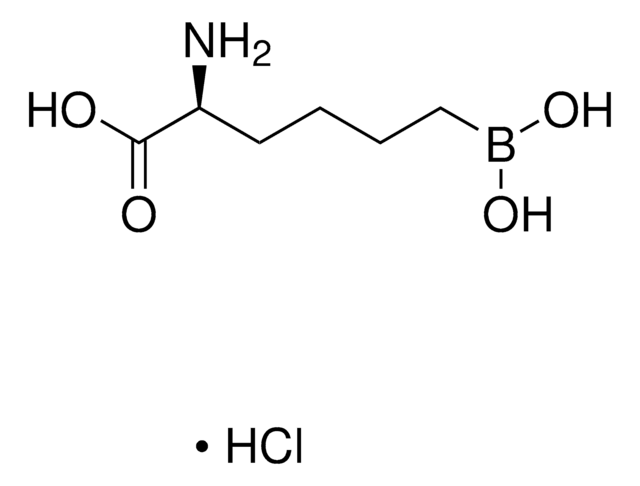SML0140
BV02
≥98% (HPLC)
Synonym(s):
2-(2,3-Dihydro-1,5-dimethyl-3-oxo-2-phenyl-1H-pyrazol-4-yl)-2,3-dihydro-1,3-dioxo-1H-isoindole-5-carboxylic acid
About This Item
Recommended Products
description
The structure of BV02 differs slightly from the published form, but has been internally verified by Sigma-Aldrich quality control.
Quality Level
Assay
≥98% (HPLC)
form
powder
color
white to off-white
solubility
DMSO: >5 mg/mL
storage temp.
room temp
SMILES string
CN1N(c2ccccc2)C(=O)C(N3C(=O)c4ccc(cc4C3=O)C(O)=O)=C1C
InChI
1S/C20H15N3O5/c1-11-16(19(26)23(21(11)2)13-6-4-3-5-7-13)22-17(24)14-9-8-12(20(27)28)10-15(14)18(22)25/h3-10H,1-2H3,(H,27,28)
InChI key
ZFYSDSINNOLWGO-UHFFFAOYSA-N
Application
Biochem/physiol Actions
Signal Word
Warning
Hazard Statements
Precautionary Statements
Hazard Classifications
Aquatic Acute 1
Storage Class Code
11 - Combustible Solids
WGK
WGK 3
Flash Point(F)
Not applicable
Flash Point(C)
Not applicable
Certificates of Analysis (COA)
Search for Certificates of Analysis (COA) by entering the products Lot/Batch Number. Lot and Batch Numbers can be found on a product’s label following the words ‘Lot’ or ‘Batch’.
Already Own This Product?
Find documentation for the products that you have recently purchased in the Document Library.
Our team of scientists has experience in all areas of research including Life Science, Material Science, Chemical Synthesis, Chromatography, Analytical and many others.
Contact Technical Service







